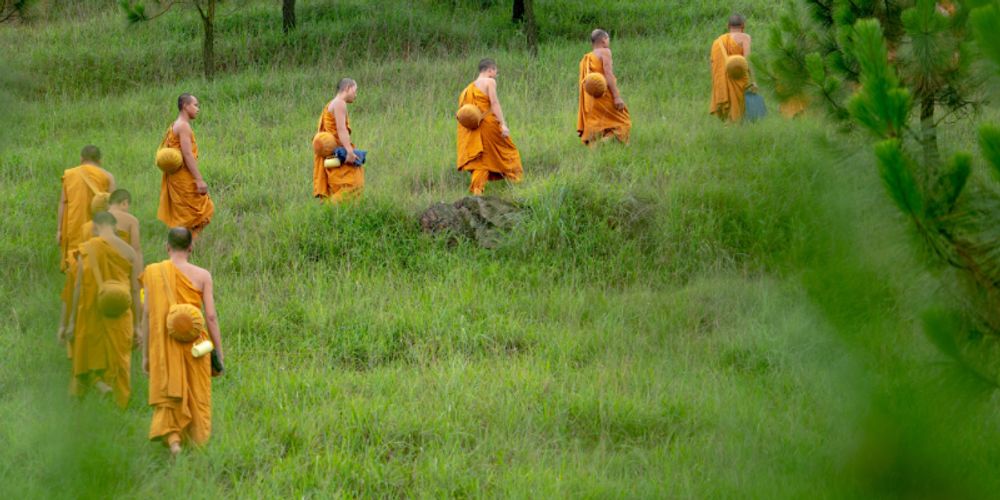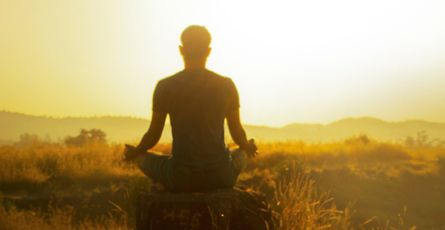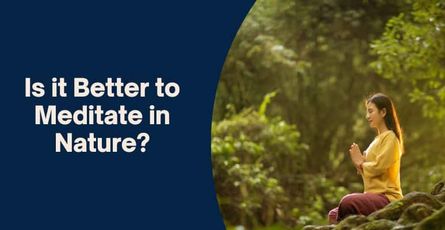Where Do Monks Go When They Meditate?
-
 Dan Rivers
Dan Rivers
- 7 March 2023

When we talk about the positive habits you can adopt during meditation, monks come to mind as they’re known to be disciplined and peaceful individuals. However, anyone following Buddhist philosophy can become a monk.
But when it comes to meditation, is there a certain spot monks choose to go to for their practice? Monks are many times seen meditating in nature or in waterfalls as it can make the experience more meaningful. But by no means is this a requirement if you’re a monk and meditating.
However, we’ll explore some of the common spots monks may choose as their place for meditation. Some of these spots include: waterfalls, mountains, cold places, beaches, and being with trees, among other spots.
You’ll also learn how these places can apply to your life if you’re currently meditating, even if you’re not a monk. At the end of the day, not much is required if you want to meditate in the true sense of it.
If we think of standard meditation where you’re focused on the present and you enter a deep state of peace, all you need to do is to focus on your breath, and everything else will fall into place.
It will be easier to allocate your attention to your breath, as one of the core benefits of meditation is allowing you to destine your attention narrowly, rather than widely.
Our focus is a scarce resource, and the more it is allocated to one thing, such as our breath, the better the outcome on anything else we do will be, as we’re creating a habit of being deliberate.
However, this isn’t always as easy if we’re limiting our attention to just our breath. In some cases, an environment change makes all the difference as we’re not only breaking a pattern of thinking but tailoring our environment for one specific purpose, in this case, meditation.
Waterfall Meditation
Waterfall meditation, often known as Takigyo is a popular meditation for some monks that are on a quest of cleansing their souls.
For everyday individuals that meditate without necessarily any spiritual or religious intent, waterfall meditation allows them to engage all their senses and still have a profound experience.
Looking at things from the bigger picture, meditating is like receiving what’s about to come with open arms where we can learn a lot about ourselves. Waterfall meditation can be done many times with a group of people, alone, or with a guide.
But not everyone has access to a waterfall, which is completely fine, and this brings me to the next point.
You can take advantage of whichever situation that’s present in nature and meditate as close to nature as possible.
But this, of course, is only optional, if you want to experience another level of meditation where you compromise some of your comfort zone.
However, meditating in your own place can already be hard enough, since there’s a psychological part to meditation and overcoming your own shadows.
For many, this is a dark enough experience, so meditating in nature can either be a blissful experience or can make it harder even if most find it blissful, so you must find what works best for you. Where you go and meditate can also vary, depending on what your goals are.
Meditating In The Cold
Monks are known for having admirable mental strength, in some cases, putting themselves through pain deliberately to train themselves in this area.
If you have access to a snowy or icy environment, you may want to train your mental strength by meditating in the cold. It’s sure to train your discipline, but meditation alone is often enough to train your discipline.
However, this is more if you’re up for a bigger challenge and already feel comfortable with meditation.
If you do something cold turkey, you may give up altogether, so reconsider picking up several habits at the same time as it’s a 180-degree shift for the mind, and this can backfire if the programming is the opposite of what you’re trying to do on a subconscious level. Gradual, step-by-step changes will make everything easier.
You don’t ever have to meditate under a cold, but this is only one way to strengthen mental endurance, just like taking a cold shower is.
Over time, you may find yourself having the same endurance as Shaolin monks do. Now, by no means am I advocating you put yourself through physical pain while meditating, as, how you see meditation can many times determine whether you see it worthy of pursuing or not.
Beach Meditation
Let’s look at the contrasting side of things and start with a warm, comfortable environment.
Entering a more peaceful territory where you’re able to more easily acquire the peace of mind a monk has, you may want to consider meditating on a beach if you have access to one. This will put your focus to the test, assuming you’re surrounded by other people and distracted by their chatter. Your goal here is to focus on the waves.
Sometimes, focusing on our own breath isn’t the easiest thing we can do, but instead, if you choose to focus on the waves, there may be less of a chance for the mind to wander to other places you don’t want it to wander to because while you can control the paste of your breath, the sound of the waves usually stays at the same rhythm.
Another benefit of meditating on the beach is the subconscious association you make with it and meditation.
If you change your environment to make it easier to pick up a habit, and you associate it with something pleasant, meditation as a whole may be easier for you to adopt.
Mountain Meditation
Mountains are a popular spot for Buddhist monks to practice meditation on.
If you crave true silence and peace, something that we don’t always have the luxury of when meditating, going to the mountains may do the trick for you, as you’ll be alone with your thoughts, feeling the wind.
Sitting on a rock to meditate may not sound relaxing and isn’t for many, so if you choose to meditate in the mountains, you may want to take this into account and perhaps bring a bench.
If you’re a novice, you’ll want to make the meditation as comfortable as possible. Just because you’re not experiencing discomfort doesn’t mean you’re not progressing.
You can simply choose to view the beautiful landscape as you meditate and focus on your breath or close your eyes.
Meditating With Trees
Trees have been a popular destination for some meditators, including monks. Trees are seen as beings we can share oneness with, and can give us a feeling of wisdom and calmness.
It can be one of the more comfortable meditations, as we have something to lean our back on and keep a good posture while simultaneously being in touch with nature.
One thing is meditating in a normal room, which is completely valid, but there’s something special about connecting with nature as we meditate that aids the feeling of peace.
If you’ve struggled to pick up meditation as your daily routine, consider doing the practice in nature where you’ll be undisrupted.
Trees are a perfect way to unplug from the world and replenish ourselves to come back stronger and more in tune with the present moment.
Oneness is a sensation many that are on an advanced spiritual stage chase, as we tend to feel more complete when we connect with other beings, and more so nature.
Many turn to trees as a way to let their thoughts and worries out because trees provide a good sense of safety and tranquility.
It’s as if we’re interacting with the tree and told we’re in good hands and can share our worries without any worries, something we explicitly do with meditation when we let thoughts walk freely without us dwelling on them.
Even if nature meditation isn’t for everyone, (in fact, most meditators don’t necessarily meditate in nature and still find the practice fulfilling) you’ll rarely see someone feeling more stressed as a result of interacting with nature, more specifically, trees.


